Abstract
The effect of successive inocula of tumour cells given to rats at intervals of 1 to 10 days was examined. If W256 cells were injected on both occasions, the second inoculum failed to grow if given into the footpad as early as 1 day, or intravenously as soon as 4 days, after the first administration. However, although a second inoculum failed to grow, it produced significant augmentation of the growth of the primary implant if given during its latent or growth phases. If the second inoculum contained cells from a fibrosarcoma unrelated to W256, its growth was effectively curtailed if the initial inoculum had preceded it by 24 h or more. However, secondary inocula of fibrosarcoma cells did not augment the growth of the primary W256 tumour.
Full text
PDF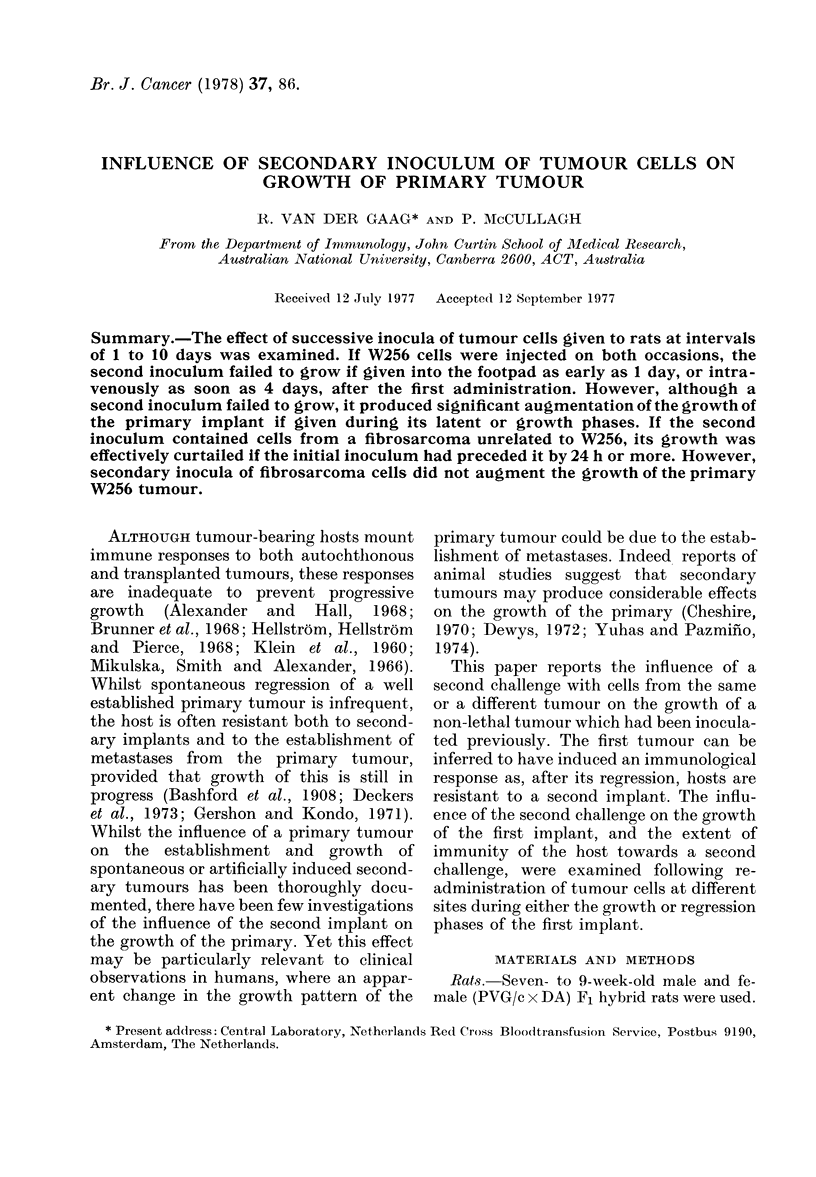
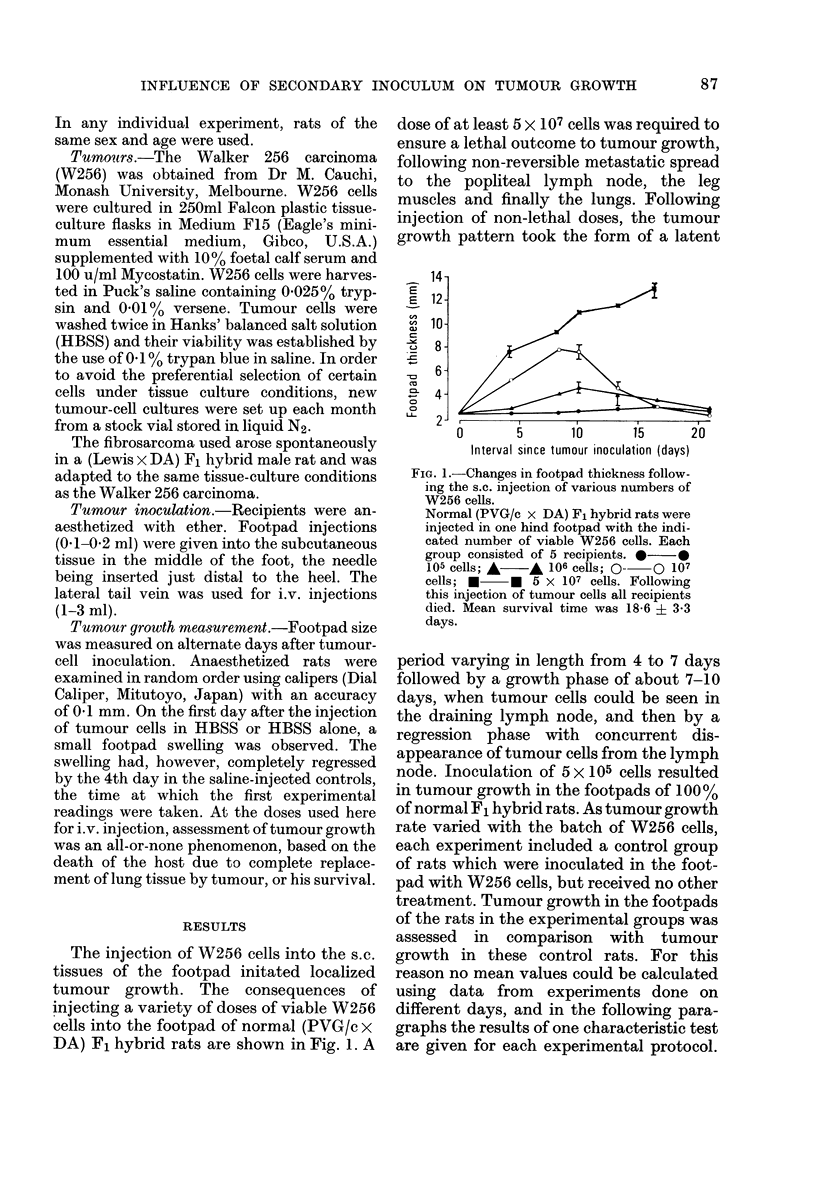

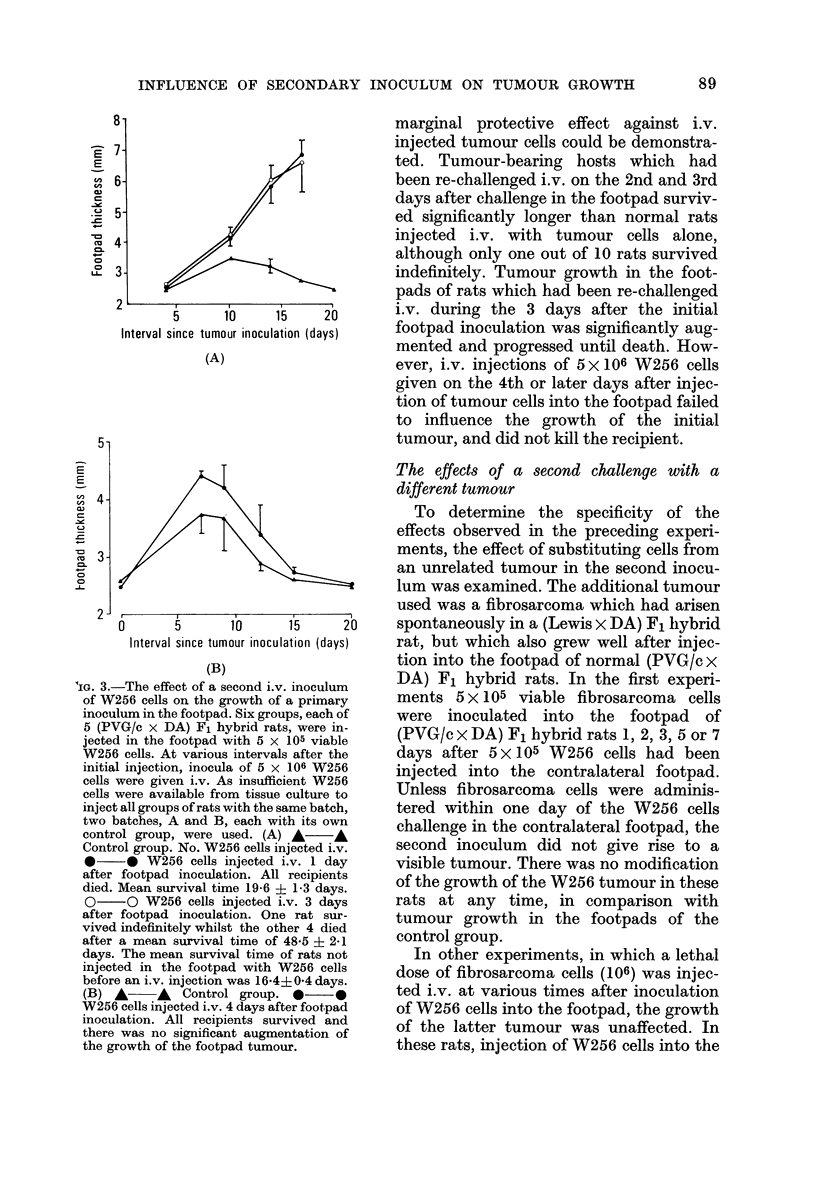
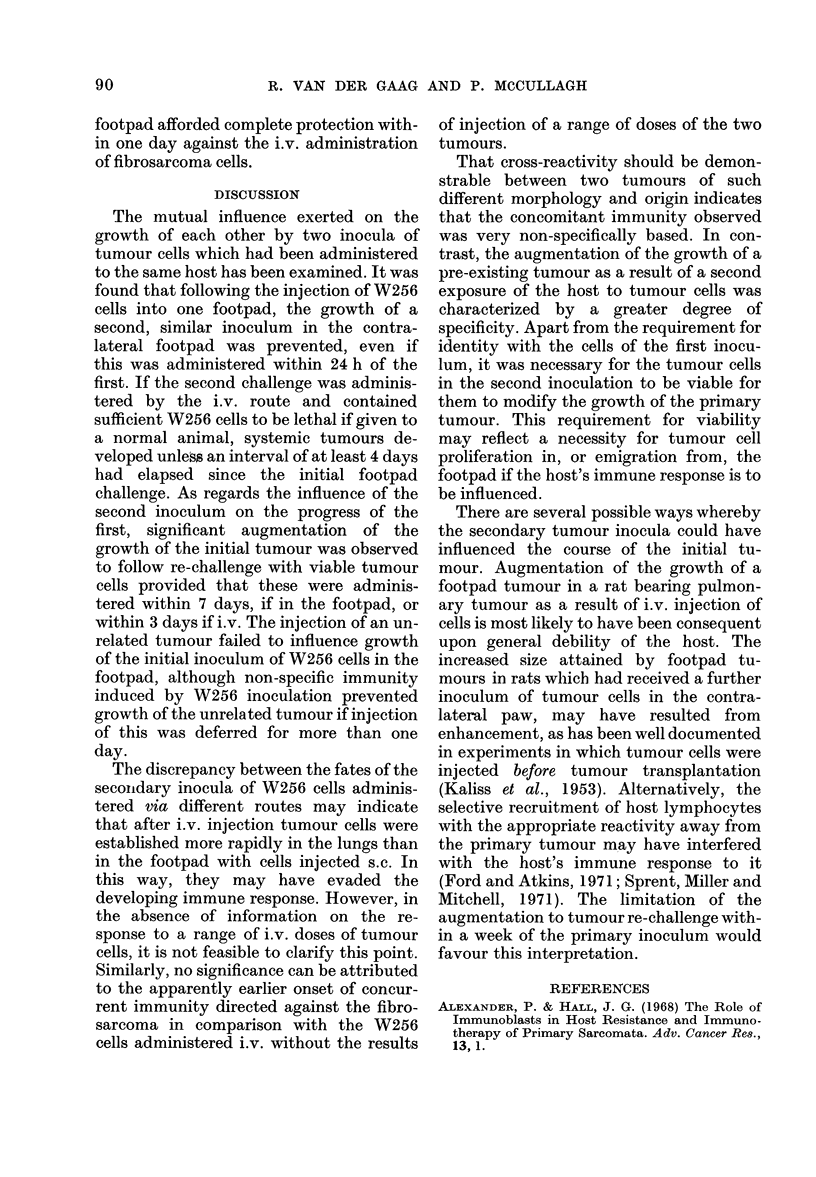
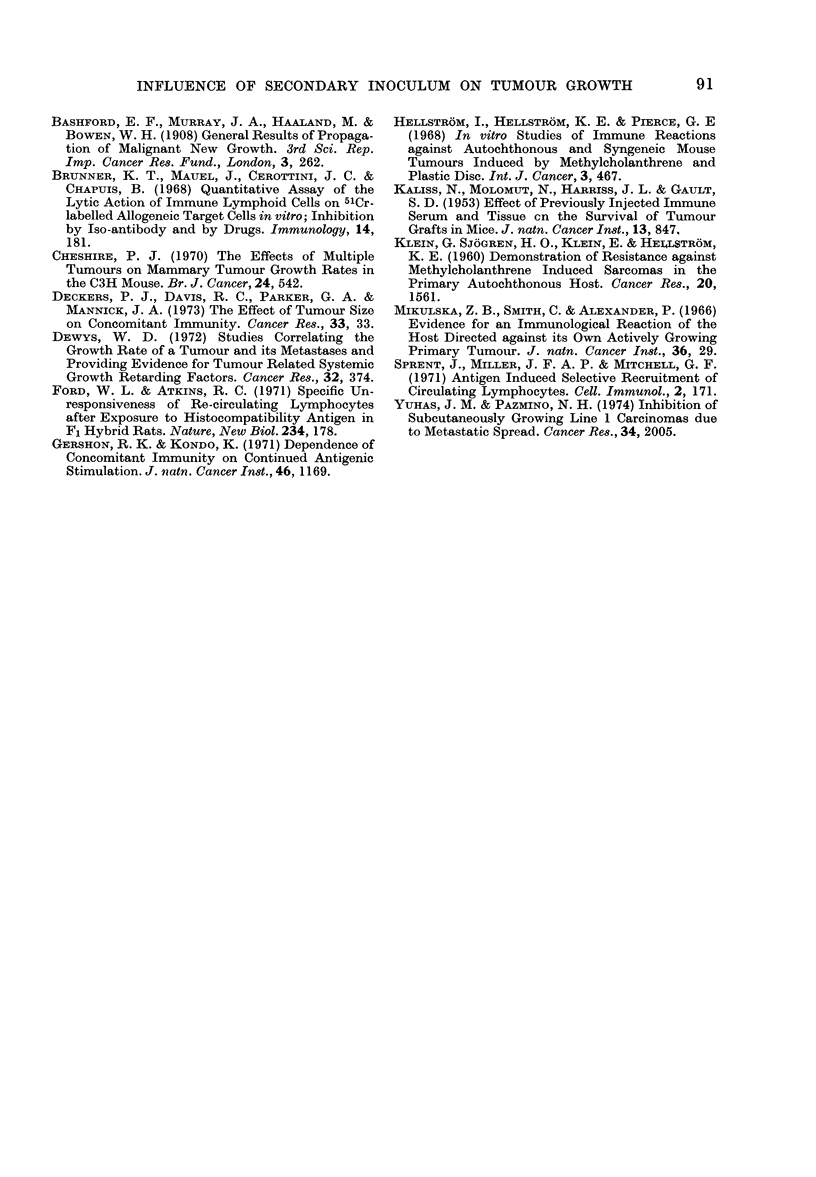
Selected References
These references are in PubMed. This may not be the complete list of references from this article.
- Alexander P., Hall J. G. The role of immunoblasts in host resistance and immunotherapy of primary sarcomata. Adv Cancer Res. 1970;13:1–37. doi: 10.1016/s0065-230x(08)60162-1. [DOI] [PubMed] [Google Scholar]
- Brunner K. T., Mauel J., Cerottini J. C., Chapuis B. Quantitative assay of the lytic action of immune lymphoid cells on 51-Cr-labelled allogeneic target cells in vitro; inhibition by isoantibody and by drugs. Immunology. 1968 Feb;14(2):181–196. [PMC free article] [PubMed] [Google Scholar]
- Cheshire P. J. The effect of multiple tumours on mammary tumour growth rates in the C3H mouse. Br J Cancer. 1970 Sep;24(3):542–547. doi: 10.1038/bjc.1970.65. [DOI] [PMC free article] [PubMed] [Google Scholar]
- DeWys W. D. Studies correlating the growth rate of a tumor and its metastases and providing evidence for tumor-related systemic growth-retarding factors. Cancer Res. 1972 Feb;32(2):374–379. [PubMed] [Google Scholar]
- Deckers P. J., Davis R. C., Parker G. A., Mannick J. A. The effect of tumor size on concomitant tumor immunity. Cancer Res. 1973 Jan;33(1):33–39. [PubMed] [Google Scholar]
- Ford W. L., Atkins R. C. Specific unresponsiveness of recirculating lymphocytes ater exposure to histocompatibility antigen in F 1 hybrid rats. Nat New Biol. 1971 Dec 8;234(49):178–180. doi: 10.1038/newbio234178a0. [DOI] [PubMed] [Google Scholar]
- Gershon R. K., Kondo K. Dependence of concomitant tumor immunity on continued antigenic stimulation. J Natl Cancer Inst. 1971 Jun;46(6):1169–1175. [PubMed] [Google Scholar]
- Hellström I., Hellström K. E., Pierce G. E. In vitro studies of immune reactions against autochthonous and syngeneic mouse tumors induced by methylcholanthrene and plastic discs. Int J Cancer. 1968 Jul 15;3(4):467–482. doi: 10.1002/ijc.2910030408. [DOI] [PubMed] [Google Scholar]
- KALISS N., MOLOMUT N., HARRISS J. L., GAULT S. D. Effect of previously injected immune serum and tissue on the survival of tumor grafts in mice. J Natl Cancer Inst. 1953 Feb;13(4):847–850. [PubMed] [Google Scholar]
- KLEIN G., SJOGREN H. O., KLEIN E., HELLSTROM K. E. Demonstration of resistance against methylcholanthrene-induced sarcomas in the primary autochthonous host. Cancer Res. 1960 Dec;20:1561–1572. [PubMed] [Google Scholar]
- Mikulska Z. B., Smith C., Alexander P. Evidence for an immunological reaction of the host directed against its own actively growing primary tumor. J Natl Cancer Inst. 1966 Jan;36(1):29–35. [PubMed] [Google Scholar]
- Sprent J., Miller J. F., Mitchell G. F. Antigen-induced selective recruitment of circulating lymphocytes. Cell Immunol. 1971 Apr;2(2):171–181. doi: 10.1016/0008-8749(71)90036-0. [DOI] [PubMed] [Google Scholar]
- Yuhas J. M., Pazmiño N. H. Inhibition of subcutaneously growing line 1 carcinomas due to metastatic spread. Cancer Res. 1974 Aug;34(8):2005–2010. [PubMed] [Google Scholar]


